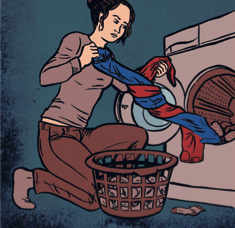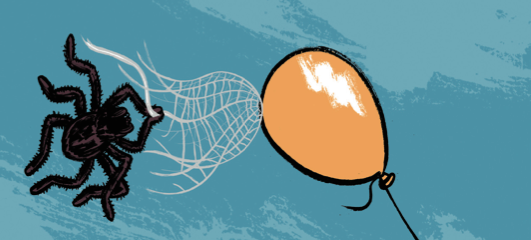TUESDAY, 20 MAY 2014
Human chimerasIf a child takes a blood test and is found to not genetically match the father, it doesn’t take a detective to figure out why. But what if the mismatch is with the mother? This is the case of Karen Keegan and the curious peculiarity of the ‘human chimeras’. Suffering from renal failure, Karen was in need of a kidney transplant. Her husband and two oldest children gave blood samples to see if they would be a match. To everyone’s surprise the children did not relate genetically to her, although they did to the father. Further tests showed that, even though her blood DNA did not match her child’s DNA, the DNA gathered from her organs did. The solution? Karen isn’t technically one person: she’s two! During Karen’s conception two spermatozoon fertilised two eggs, producing twins. In the course of the pregnancy, the embryos fused, and each of them developed in different areas of her body. This phenomenon, known as ‘Chimerism’, has been recorded in several cases around the world. The twins can even be of different sex and this can produce hermaphroditic individuals. As for Karen, though none of her children matched, it was found that her husband was a suitable donor and she is still alive today. Nathan Smith
Spider’s web aren’t just sticky: they’re staticky!
A team led by fritz Vollrath at the University of Oxford have discovered that the glue across the surface of spider webs conducts electricity. The article published in Naturwissenshaften late last year describes how the electrostatic field across a web causes it to reach out and grab any charged particle that comes close enough. As a result, pollen, airborne droplets and insects are all fair prey. Based on this experimental finding, Vollrath and his team modelled two possible consequences. First, they proposed that the electrostatic field of a web should cause a small, local disruption in the natural electric field of the Earth itself. Most flying insects should be able to detect changes in local electric fields through movements in their antennae, and so it is possible that an approaching insect could sense the presence of a web in this way. However, whether an insect would have enough warning to evade the web before it snares them is yet unclear. Another conclusion of the article is that spiders’ webs could catch airborne pollutants such as pesticides and fertilisers. This could make it possible to measure pollutant levels in a particular area by using webs as natural sensors. Bad news for house-proud spiders and arachnophobic environmental scientists alike. Courtney Landers
It’s peanut butter jellyfish time
a whole new meaning has been given to the infamous peanut butter and jelly sandwich, with scientists at the Dallas Zoo creating the world’s first peanut butter jellyfish. Two hundred and fifty baby moon jellyfish were fed a mixture of peanut butter and salt water twice every 24 hours. Within 8 days of ‘peanut-butterification’ the jellyfish had grown significantly and turned brown. They even resembled peanut butter cups! “We just wanted to see if it could be done,” said scientists Montoya and Christie. “Whether or not it should be done is a question no doubt to be debated by philosophers for years to come (or at least by some aquarists over beers)”, they mused. Although experimenting with the popular spread may have started as some light frivolity, the results could have important implications for aquaculture. Aquatic invertebrates are notoriously difficult to keep in captivity and their dietary requirements differ significantly from the average goldfish. Finding a novel, inexpensive protein source to replace the unsustainable fish and shrimp-based feeds currently used has been a focus of research for some time. While comprehensive studies have yet to be conducted, the lucky jellies in this study appear to have thrived as well as those fed a traditional diet. Closing comments from the scientists implied an additional philanthropic agenda to their research, stating: “We feel that becoming one with peanut butter helps them fulfil their ultimate destiny–to become peanut butter and jellyfish!” Martha Stokes


